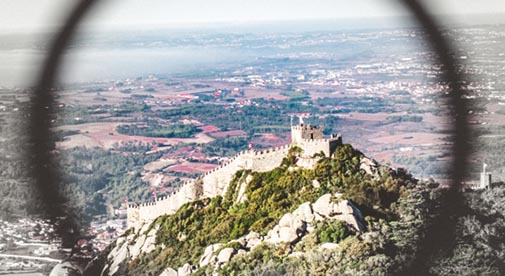You can use the best digital equipment in the world, be at the most beautiful place in the universe, but the composition of your photo is what makes the difference. It’s what separates the professional photographers from the amateurs. Composition makes a photograph interesting, vibrant, and alive.
Too often, photographs contain one or more basic composition flaws. By following some simple guidelines on photographic composition, you turn your “snapshot” photos into creative images that you can treasure and share.
Try these composition tricks to dramatically improve your photography.
1. Move in close
Most photographers stand too far back from their subject when they take a picture. The results are a photograph that includes too much—the main subject is only a small part of the whole picture. If you want a photograph of your subject, move in close so that your subject dominates the picture.
The photograph you want is the potter crouching over his potter’s wheel, creating a pitcher with his hands—not the whole pottery shop. By moving in close, you create a bold, graphic statement about your subject. You show the sweat on the potter’s brow, seeing the intense concentration he needs to create such fine work.
By moving in close, you also cut out distracting backgrounds. Nothing ruins a fine portrait faster than a confusing background. When your subject has to compete against its background, the subject will lose. To correct this, move in close and fill the viewfinder with just the subject.
2. Watch for background elements
Having said to cut out distracting backgrounds, you still have to be aware of the background. Trees and telephone poles are one of the biggest problems when photographing people outdoors. They have a nasty habit of popping out of people’s heads, or so it seems. The photographer was so focused on his subject, he failed to notice the tree in the background right behind the subject. So, it looks like the tree is “growing” out of the subject’s head.
When composing a photograph, take your time and move around your subject. View your subject from all sides. While you don’t need to take all day for just one photograph, take a few moments to find a better angle. Your extra effort will result in a more interesting photograph.
3. Use leading lines to the subject
A leading line is anything that starts from the edge of the frame and moves to the subject, drawing your eye to the main subject. It’s one of the oldest composition techniques in photography—in fact, it predates photography!
Painters have used this basic composition technique for centuries. When they were looking for a pleasing way to present a landscape, they would use a curved country road, a fence railing, or even a mountain range.
The next time you’re taking a landscape picture, walk around your subject until you find a road, a fence, or a river that you can use as a leading line.
4. Use framing and foreground
Another composition technique professional photographers use when taking scenic photographs is using a natural frame around the subject. Take a look at your surroundings and see if there is the branch of a tree or some other object that you can use to run along the side and foreground of the image.
This kind of framing directs the viewer’s eye to the subject of the photograph. It also gives your pictures a feeling of depth and dimension.
Another way to get depth is to use people in the foreground in your scenic picture. By including a person, the viewer gets a perspective that he can understand by comparing the person with the rest of the scene.
5. Keep shooting
The biggest difference between an amateur and a professional photographer is the number of pictures they shoot. I’m constantly surprised when friends show me their pictures of a scenic place. They have maybe two or three pictures of each scene. I usually take many, many photos to get the right one—which is why I carry multiple memory cards with me.
When in a scenic situation, take lots of pictures. Move around to change the angle, distance, and exposure. For example, on a recent trip to Jamaica, I took more than 1,000 pictures. That may be overkill, but I don’t know if I’ll ever get back to that beautiful place. I want to make certain I have the photos. With that many photos to choose from, I’m sure to find some good photos using the above techniques.
[Editor’s Note: Learn more about how you can fund your travels and make an extra income with photography, travel writing, blogging, and more in our free online newsletter The Right Way to Travel. Sign up here today and we’ll send you a new report, Three Fun Ways To Get Paid To Travel: A Quick-Start Guide, completely FREE.]

